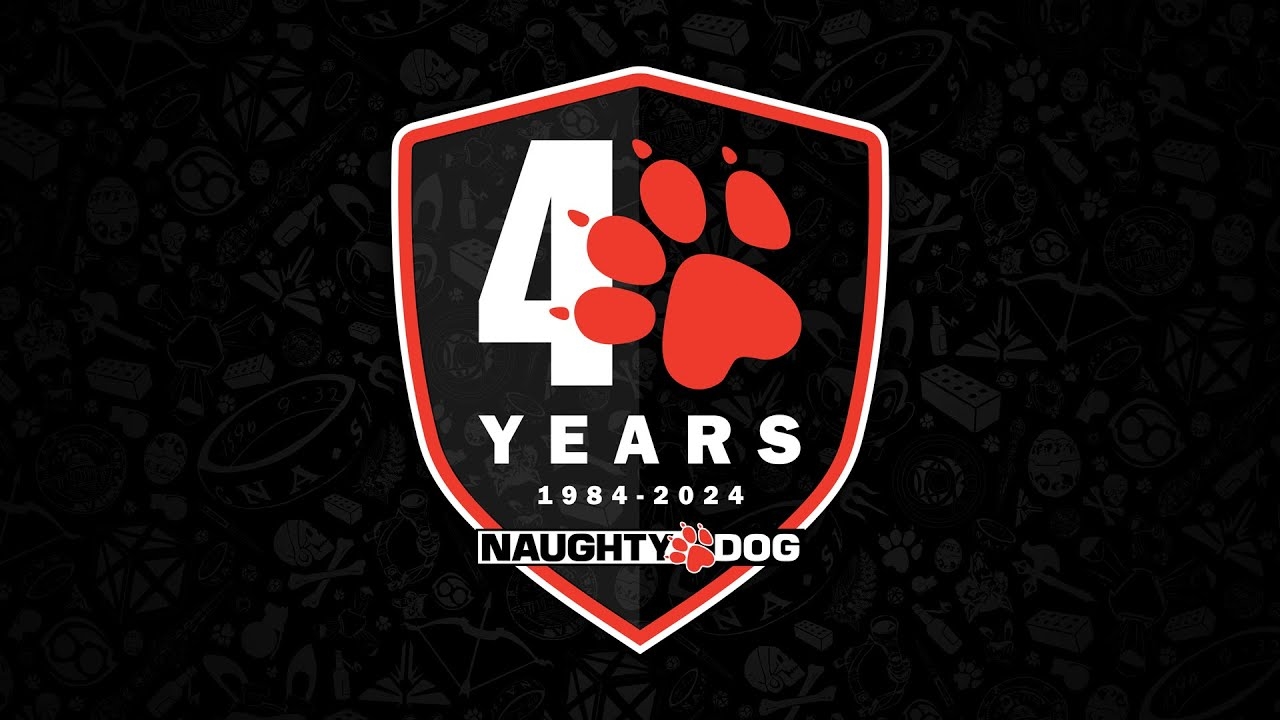
Few studios can boast of reaching such an age in an ever-changing industry, yet Naughty Dog has done just that. The studio has just celebrated its 40th anniversary, marking the end of a remarkable journey punctuated by numerous successes. Of course, there have been ups and downs—as in any entrepreneurial venture—but with hindsight, it’s clear that few can boast such a high level of production, opus after opus.
The beginning of the American dream
Founded in 1984 by Jason Rubin and Andy Gavin, the studio was initially called JAM Software, which stood for “Jason and Andy’s Magic.” They developed their games in a very “garage” atmosphere, much like the big American companies of the time.
The name quickly changed, as the two founders feared confusion with the clothing brand “Jams,” which specialized in beach shorts. They opted for “Naughty Dog,” inspired by a fictional character they had imagined, a mischievous dog that would serve as their mascot for some time.
The studio cut its teeth with titles such as Ski Crazed on Apple II, Dream Zone, Keef the Thief, and even experimented with a game on Mega Drive with Rings of Power or Way of the Warrior on 3DO. That being said, the real turning point was in 1996 with Crash Bandicoot, their first big hit, which came with the release of Sony’s PlayStation.
The first real hit
The first Crash Bandicoot was a huge hit, selling over 6 million copies. It spawned a trilogy with Crash Bandicoot 2: Cortex Strikes Back, which did even better with 7.5 million copies sold, followed by Crash Bandicoot 3: Warped, which also sold over 7 million copies. Building on this popularity, Sony and Naughty Dog rode the wave and launched Crash Team Racing in 1999, a racing game inspired by Mario Kart but set in the crazy world of the marsupial. The result was a critical and commercial success, selling over 4 million copies.
The studio becomes a subsidiary of Sony
Naughty Dog quickly demonstrated one of its greatest strengths: its ability to reinvent itself. The studio did not hesitate to abandon a thriving franchise to explore other worlds. In 2001, the company officially became a subsidiary of Sony and offered a new world with Jak and Daxter. This platform game retains the schoolboy humor of their previous creations, while immersing us in a rich universe populated by colorful characters. Success was once again on the cards, with over 3 million copies sold and the birth of a new saga on PlayStation 2.
Thanks to the technological leap forward made possible by the console, the teams were able to go further with much more sophisticated 3D graphics. This was followed by Jak II and Jak 3, two solid sequels, before a first setback with Jak X. Whereas all their games on Sony consoles easily exceeded a million sales, this one struggled to break the 500,000 mark. The reason was a poorly executed shift towards car racing: overly simplistic gameplay, reduced clarity, and rapidly waning interest. Critics were harsher, and sales suffered.
But true to its philosophy, Naughty Dog didn’t dwell on it and moved on. After making its mark on PlayStation with Crash Bandicoot, then PS2 with Jak and Daxter, the studio turned its attention to PlayStation 3.
Naughty Dog goes global
This new generation of consoles gave rise to one of the studio’s most iconic sagas: Uncharted. The first installment, Drake’s Fortune, lays the groundwork: Nathan Drake, a mix between Indiana Jones and Lara Croft, takes players on a dynamic, cinematic adventure. The game has sold nearly 5 million copies. Its sequels, Uncharted 2: Among Thieves and Uncharted 3: Drake’s Deception, both sold over 6.5 million copies.
Each episode surpasses the previous one. The gameplay is refined, the storytelling is polished, and the immersion reaches new heights. Building on this mastery, Naughty Dog then developed another cult universe: The Last of Us. This post-apocalyptic narrative game is undoubtedly the studio’s biggest success. Where one might have feared yet another story about zombies or the infected, the experience surprises with its emotional depth, melancholy, and narrative strength. The result is impressive: more than 37 million games sold, including The Last of Us Part II and the various remastered versions.
Despite this success, not everything will be perfect. One of the spin-off projects, The Last of Us: Online, will ultimately be canceled due to insufficient quality. This serves as a reminder that multiplayer, unlike single-player storytelling, requires a specific approach and expertise that even an experienced studio does not automatically master.
Naughty Dog and its key figures
We couldn’t end this column without mentioning the women and men who have shaped, or continue to shape, this unique company. In its 40 years of existence, Naughty Dog has seen many people come and go.
It is therefore essential to say a few words about Amy Hennig, without whom the company would undoubtedly have taken a very different path. Thanks to her work on Jak and Daxter and Uncharted as Creative Director and Game Director, these franchises have gained in scope and depth. Her talent was recognized by her peers when she received a Game Developers Choice Award for her lifetime achievement.
Although Amy did not spend her entire career at Naughty Dog, her resume is impressive. She has worked on Legacy of Kain: Soul Reaver, Battlefield: Hardline, and Forspoken, among others. She is currently working on Marvel 1943: Rise of Hydra for Skydance Studios. The game is expected to be released in 2026, and will allow us to judge whether the creator has retained all her mastery and narrative flair.
We mustn’t forget Neil Druckmann, to whom we dedicated an entire column a few months ago. His career is as unusual as it is inspiring, having climbed the corporate ladder one rung at a time thanks to his creativity and talent, rising from intern to co-president of Naughty Dog. He is now the director of The Last of Us and has also held key positions on the Uncharted franchise.
What’s next?
Naughty Dog is currently working on its next game: Intergalactic: The Heretic Prophet. It’s an ambitious new franchise that many hope will live up to its predecessors.
We also know that the studio is working on several unannounced projects, and many fans are dreaming of one last The Last of Us.


